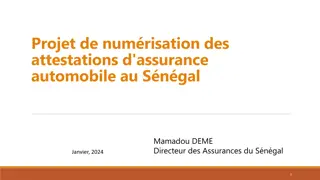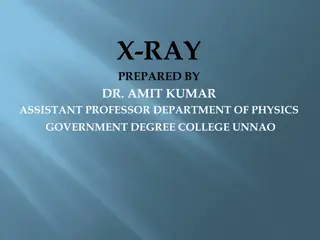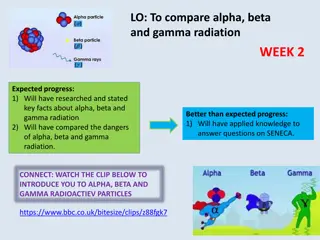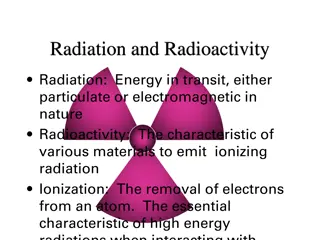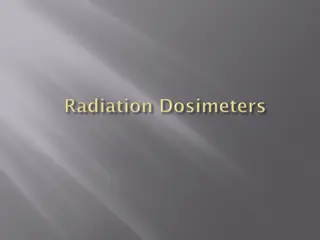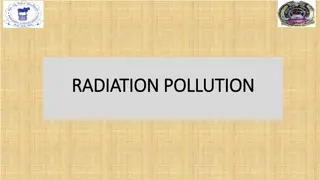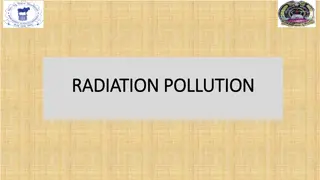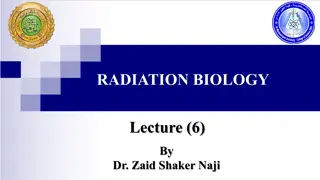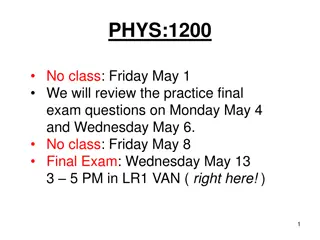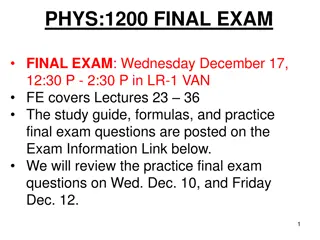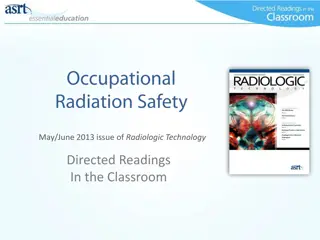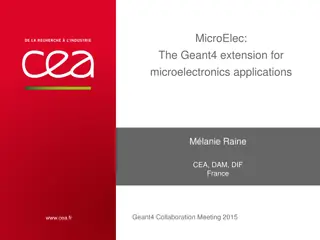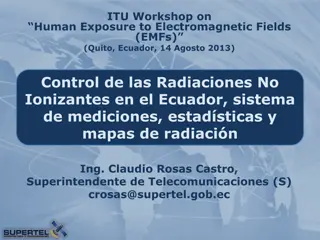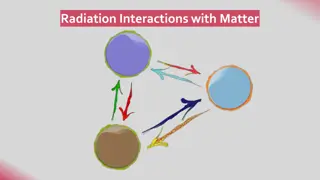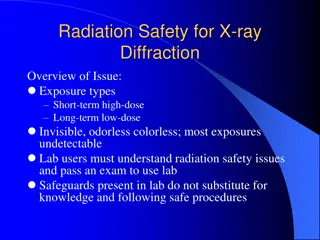Regional Forum for Standardization - Support for Non-Ionizing Radiation Problematics in Senegal
Proliferation of cellular base antennas and radio stations raises concerns about non-ionizing radiation in Senegal. International regulatory requirements, including ICNIRP guidelines, are crucial for protecting public health and the environment. The forum addresses measurements and future prospects related to this issue.
Download Presentation

Please find below an Image/Link to download the presentation.
The content on the website is provided AS IS for your information and personal use only. It may not be sold, licensed, or shared on other websites without obtaining consent from the author.If you encounter any issues during the download, it is possible that the publisher has removed the file from their server.
You are allowed to download the files provided on this website for personal or commercial use, subject to the condition that they are used lawfully. All files are the property of their respective owners.
The content on the website is provided AS IS for your information and personal use only. It may not be sold, licensed, or shared on other websites without obtaining consent from the author.
E N D
Presentation Transcript
UN PEUPThe - UN BUT - AE Faith PRIMHASTU RE Regional Forum for standardization Dakar 24 - March 25, 2015 SUPPORT FOR THE PROBLEMATIC OF NIR: case of Senegal
SUMMARY 1. CONTEXT AND GENERAL INFORMATION 2. RECALL OF THE INTERNATIONAL REGULATORY REQUIREMENTS 3. THE REGULATION IN SENEGAL 4. A FEW RESULTS OF MEASUREMENTS 5. PROSPECTS 20.03.15 2
1- CONTEXT AND GENERAL INFORMATION Proliferation of base antennas of cellular networks; Implantation of radio stations in public places; Concern for the surrounding population Non-ionizing Radiation (frequencies below 300 GHz) Ionizing Radiations (X-rays, gamma, alpha, beta, etc.) that produce ionisations in the materials they pass through? 20.03.15 3
2- RECALL OF INTERNATIONAL REGULATORY REQUIREMENTS In 1996 the WHO has established an international project for the study of electromagnetic fields whose goal is to evaluate the effects on health and the environment from exposure to electrical and magnetic fields included in the range of frequencies from 0 to 300 GHz band. The International Radiation Protection Association (IRPA) has put in place the scientific commission ICNIRP for promoting the protection against non-ionizing radiation (NIR) in the interest of the population and the environment. The ICNIRP is a non-governmental organization officially recognized by the WHO and the ILO in the field of NIR 20.03.15 4
2-RECALL OF INTERNATIONAL REGULATORY REQUIREMENTS The ICNIRP has established in 1998 the recommendations in two phases: PHASE 1: Basic Restrictions (TAS / DAS) expressed in A limit of 0.4 W/Kg for the workers A limit of 0.08 W/kg for the general public PHASE 2: reference levels expressed in Electric field strength (E in V/m), Magnetic field strength (H) in A/m), Magnetic induction (B in mT), Power density (S in W/m2). 20.03.15 5
2- RECALL OF INTERNATIONAL REGULATORY REQUIREMENTS The reference values for the general public: 20.03.15 6
2- RECALL OF INTERNATIONAL REGULATORY REQUIREMENTS The reference levels for the different radio services: 20.03.15 7
3- THE REGULATIONS IN SENEGAL In Senegal, article 78 of the code of Telecommunications stipulates that: "The installation and operation of radio equipment must be done while taking into account the imperatives related to the protection of the public in relation to electromagnetic fields" The exposure limit values are laid down in the draft decree on the application of the Code of telecommunications. 20.03.15 8
4- SOME RESULTS OF MEASUREMENTS Algorithm of Measures 20.03.15 9
4- SOME RESULTS OF MEASUREMENTS The graph below provides a comparison between the values of fields measured and those enacted by the ICNIRP 20.03.15 10
5- Prospects Acquisition of equipment destined to NIR measures. Deployment of a fixed network of probes in the areas with a high concentration of radio electricity. Establishment of a commission in charge of sites and easements that bring together all the actors involved in the environment (Urban Planning, local communities, government departments, land development, etc.). Establishment of a national observatory for NIR with the creation of a web site where the public can visualize in real time the exposure levels. 20.03.15 11



